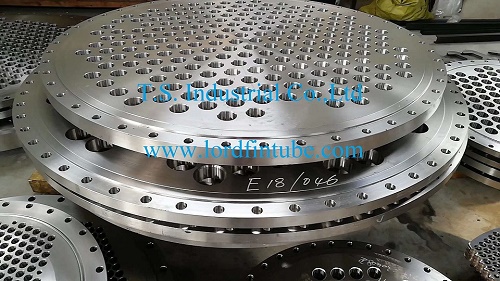What is heat exchange tube sheet?
A heat exchange tube sheet is a component used in heat exchangers, which are devices that transfer heat from one fluid to another. The tube sheet is typically a flat, circular plate that separates the two fluid streams and contains holes through which the heat exchange tubes pass. The tubes are typically sealed into the tube sheet by welding or expansion, and the sheet is often made of materials such as carbon steel, stainless steel, or titanium.
The purpose of the tube sheet is to provide a rigid support structure for the heat exchange tubes and to ensure that the tubes are properly aligned and spaced for efficient heat transfer. The tube sheet also serves to contain the fluid streams and prevent them from mixing, which could reduce the efficiency of the heat exchange process.
Tube sheets can be designed for various types of heat exchangers, such as shell and tube, double pipe, and plate heat exchangers. The design of the tube sheet is typically based on the specific requirements of the heat exchanger, such as the type of fluids being used, the flow rates and pressures, and the desired heat transfer rate.
What is heat exchange tube sheet shape?
The shape of a heat exchange tube sheet can vary depending on the design and application of the heat exchanger. Tube sheets are typically circular or rectangular in shape, although other shapes such as oval or hexagonal may be used in some specialized applications.
For a shell and tube heat exchanger, which is a common type of heat exchanger, the tube sheet is typically a circular plate that separates the shell side fluid from the tube side fluid. The heat exchange tubes are then inserted into holes drilled in the tube sheet, and are typically secured in place by welding or expanding the tube ends.
In a plate heat exchanger, the tube sheet may be rectangular or square in shape, and may be made up of a series of smaller plates that are bolted or welded together. The heat exchange plates are then inserted between the plates of the tube sheet, and are typically sealed with gaskets to prevent fluid leakage.
In both cases, the shape of the tube sheet is designed to provide a strong and stable support structure for the heat exchange tubes, while also ensuring that the fluid streams are properly separated and contained. The shape of the tube sheet is typically chosen based on the specific requirements of the heat exchanger, including factors such as the size and shape of the heat exchange tubes, the fluid flow rates and pressures, and the desired heat transfer rate.

Comments
Post a Comment